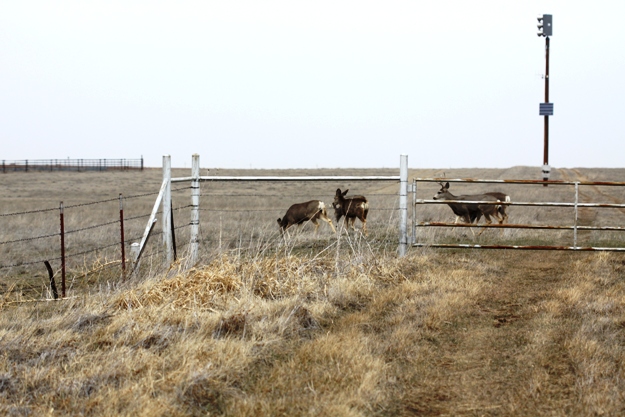Wild Pantex - Where the Deer and the Antelope Play
Article by Jim Ray, Pantex Wildlife Biologist/Scientist
The first edition of this blog served as an introduction and, while it explained our primary mission, it also set this blog series up for coverage of the not so well known aspect of our work – wildlife management and research.
There is ample room for this on our property, because most of our 18,000 acres is comprised of typical Texas Panhandle landscapes. We have directives to be good stewards of the environment and we have even taken this a step further through the development of a very visible wildlife research program, which involves partnerships and areas of focus that expand well beyond the property’s borders.
In addition to prescribed management that intentionally benefits wildlife, we also are blessed with a wide diversity of habitat at Pantex. Some species depend on a certain habitat, while others move freely between two or more during the course of a day, season or year. Diversity of wildlife habitat across the Plant consists of two primary habitat types – playa wetlands and shortgrass prairie- as well as several other land use types and soil characteristics that add up to provide diversity. In fact, 13 different habitat types are identified in one of our planning documents as contributing to habitat diversity.
So, it is by no accident that that many wildlife species can be found at Pantex. Down the road, I’ll cover various research initiatives, but at the most basic level of characterizing our resources by simply listing the wildlife that have been observed, our all-time lists are impressive:
| Mammals | 45 species |
| Birds | 200 species |
| Amphibians and Reptiles | 29 species |
| Macroinvertebrates | > 900 species |
It is not at all unusual for employees and researchers to observe mule deer, white-tailed deer, pronghorn, bobcats, coyotes, black-tailed prairie dogs, snakes, Texas horned lizards, and a wide variety of birds while at work. Many a comment comes to me that are along the lines of, “Seeing wildlife is one of the perks that makes this a great place to work.” That’s good for employee morale and it is also indicative of a healthy environment. That, we are quite proud of.

